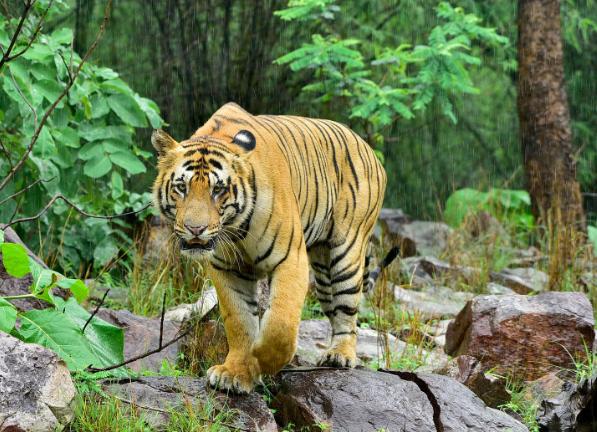Understanding the Majestic Adult Bengal Tiger
The Bengal tiger, known scientifically as Panthera tigris tigris, is one of the most iconic and awe-inspiring large cats in the world. These magnificent creatures are not only symbols of wildlife conservation but also play a crucial role in maintaining the ecosystem. By learning more about adult Bengal tigers, we can appreciate their beauty and understand the importance of their conservation.
Physical Characteristics and Behavior
Adult Bengal tigers are the largest tiger subspecies, with males typically weighing between 400 to 500 pounds and measuring up to 10 feet in length, including their tail. Their striking orange coat adorned with dark stripes is one of their most recognizable features, allowing them to camouflage effectively in their natural habitat. Bengal tigers are primarily solitary animals, often marking their territory with scent markings to assert dominance. To hunt, they rely on stealth and power, preying on animals such as deer, wild boar, and sometimes even smaller tigers.
Habitat and Distribution
Bengal tigers inhabit a variety of environments, including tropical forests, grasslands, and mangrove swamps, primarily found in India, with small populations in Bangladesh, Nepal, and Bhutan. Their habitat is critically important, as it provides food, shelter, and breeding grounds. Unfortunately, habitat loss due to deforestation, agriculture, and urbanization poses a significant threat to their survival. Conservation efforts are underway to protect these habitats, but continued support and awareness are essential for their persistence.
Threats and Conservation Efforts
While adult Bengal tigers are formidable predators, they face numerous threats, primarily from poaching and habitat destruction. The illegal wildlife trade has driven these tigers closer to extinction, as their bones and skins are highly sought after. Various organizations and governments are working tirelessly to combat these issues, implementing anti-poaching laws and establishing tiger reserves to protect these majestic animals. Public awareness and community involvement are key components for successful conservation, as local populations can help in protecting their natural environments.
Conclusion
The adult Bengal tiger is not just a majestic creature; it represents the delicate balance of nature and the ongoing battle against extinction. By understanding their characteristics, habitat needs, and the challenges they face, we can play a part in ensuring their survival. Consider supporting wildlife conservation organizations or educating others about the importance of protecting these magnificent animals. Learn more, get involved, and help make a difference for the Bengal tiger.

